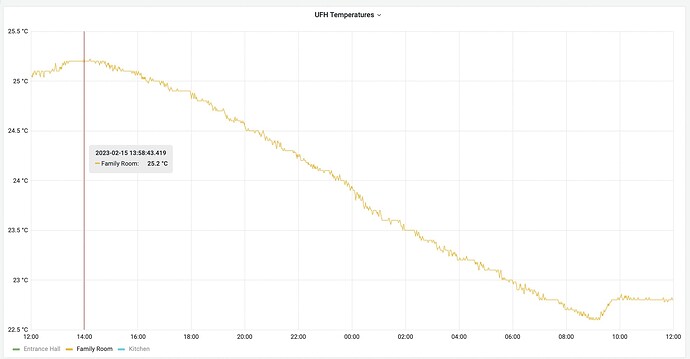Hi Everyone,
I’m very interested in thoughts on this.
New build, 2016, assume well insulated house, with wet UFH downstairs. Daikin 16Kw ASHP, no buffer tank, directly connected to UFH and upstairs rads (different zones). LWT = 41C (yes could be lower, but the rads won’t dissipate enough heat at lower temps leading to bad cycling).
Currently, I let the room stats decide when to activate the UFH - using setback and comfort temperatures as required. This obviously means the ASHP runs when it wants.
I have a silly idea to run the ASHP and heat the entire ground floor during off peak hours to ‘pre warm’ the house using cheap electricity, therefore delaying the onset of the stats needing to get the comfort temp during the day. I assume the screed and carpet would hold the heat for quite a while, and ideally, the comfort setting would not kick in until later in the afternoon.
I also have a powerwall, and the idea would be the powerwall would not be drained as quickly due to (a) The ashp not coming on just after off-peak ends to warm the house, (b) the powerwall having charge left in the afternoon when the ASHP calls for heat again (having charged overnight and via solar).
I’m keen to hear thoughts on using the floor as a ‘thermal store’ charging from cheaper electricity.
I know this is not OEM related, but to bend it that way… the UFH is controlled by the 3-relay Harizanov board sold by OEM (with heavy s/w mods) and the whole system monitored by a lot of OEM kit ![]()
